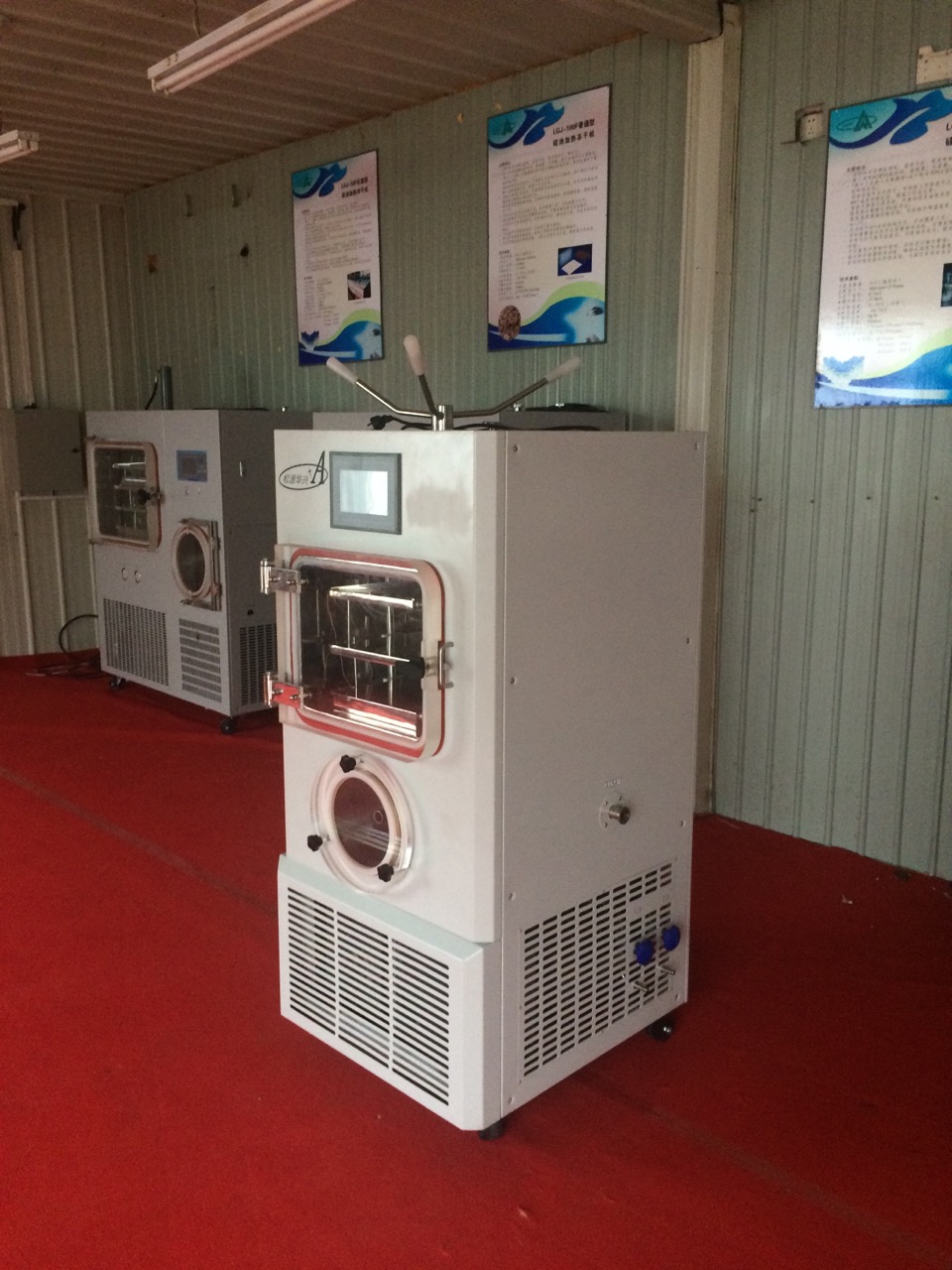Generally speaking, the literature on freeze-drying theory will mention that the greater the cooling rate, the larger the degree of supercooling and supersaturation of the solution, the smaller the particle size of the critical crystal, the faster the nucleation rate, and the smaller the size of the particles. Fine crystal. Therefore, after the ice crystals sublimate, the pore size formed in the material is small, the drying rate is low, but the rehydration after drying is good; on the contrary, the slow freezing tends to form large particles of ice crystals, and the water vapor escape channel formed by the ice crystal sublimation is larger in size. It is beneficial to increase the drying rate, but the rehydration after drying is poor.
Of course, there is nothing wrong with this, but don't forget that this theory is derived from the condition of uniform heat. However, the freeze-drying conditions provided by the medical freeze dryers in our factory are not so ideal. It's not a matter of how fast the heat transfer oil cools down. Relatively speaking, I am more in favor of the reference of a forum comrades. He divided the quick freezing and slow freezing into the following categories: 1. The plate temperature dropped faster, and the plate temperature was much lower than the product temperature. The bottom of the product first freezes to produce crystals, but the upper liquid is still hot, so it will not be all in an instant. Crystallization, crystallization will grow slowly, and the effect of slow freezing is obtained. 2. The temperature of the plate is slower, and the temperature difference between the plate temperature and the product temperature is not large. The whole product is uniformly cooled and formed into too cold. When the energy accumulation is sufficient, all the crystals are instantly crystallized, and the effect of quick freezing is obtained. 3. The temperature of the plate drops very slowly and maintains (or slowly cools down) at a suitable temperature below the eutectic point. The product forms a small degree of subcooling, and a small amount of crystallization occurs first in the liquid. These crystallization phenomena are further reduced in temperature. Continue to proceed slowly, so that you get a larger crystal, which is the real slow freezing. 4. The product is immersed in an ultra-low temperature environment (such as liquid nitrogen), and the whole crystal is instantaneously formed, forming a very fine crystal (or in an amorphous state), which is the real quick freezing. Most of the phenomena mentioned by this comrade-in-arms have been observed during the trial. Therefore, I still prefer this method of division.
What's more, in most cases, the company uses the freeze-drying method of bottle freezing, and the uneven heating of the bottle is more obvious. According to the research on the pre-freezing process of the shelf of the bottled product, the higher the initial temperature of the sample, the larger the temperature gradient of the upper and lower parts of the liquid, and the slower the growth rate of the ice crystal. If the cooling rate is slower, the ice crystal formed by the solution is coarser, the ice interface advances from the bottom to the top, the solute migration time in the solution is sufficient, and the accumulation of the solute on the surface of the solution is relatively dense. As a result, the solute of the upper surface layer tends to be more, the density is higher, and the density of the lower bottom layer is smaller, and the structure is loose. This stratification phenomenon is manifested in the poorly-formed products, or the bottom is wei, or the middle fault, or the top protrusion, or the top part of the hard shell, and so on.
In order to freeze the layering phenomenon, in practice, it is recommended to use a three-step method, that is, the sample is cooled from room temperature to the initial freezing temperature of the sample; then the cooling process is stopped, the temperature inside the sample is automatically balanced, and the temperature gradient therein is eliminated; After the zui, cool down quickly. Since the temperature of the upper and lower parts of the sample is close to the crystallization temperature at this time, the temperature gradient of the sample during the freezing process is relatively small, and the growth rate of the ice crystal is accelerated. In this way, the pre-freezing rate is increased, and the problem that the solute accumulates in the upper layer is solved. However, not all varieties have achieved significant results after using the three-step method.
If you want to engage in research on the above aspects, it is very important to choose the type of freeze-drying machine. The general experimental type and electric heating series can't be realized in real terms. The basic ones of Zui also choose the freeze-drying machine of silicone oil series, the silicone oil of Songyuan Huaxing Company. F series, and has the squirting process slope control function, the real meaning of the temperature rise and fall controllable.

Up-right Researching Biological Microscope
Up-Right Researching Biological Microscope,Discovery Microscope Lab,Labline Microscope,Medical Laboratory Microscope
Ningbo ProWay Optics & Electronics Co., Ltd. , https://www.proway-microtech.com